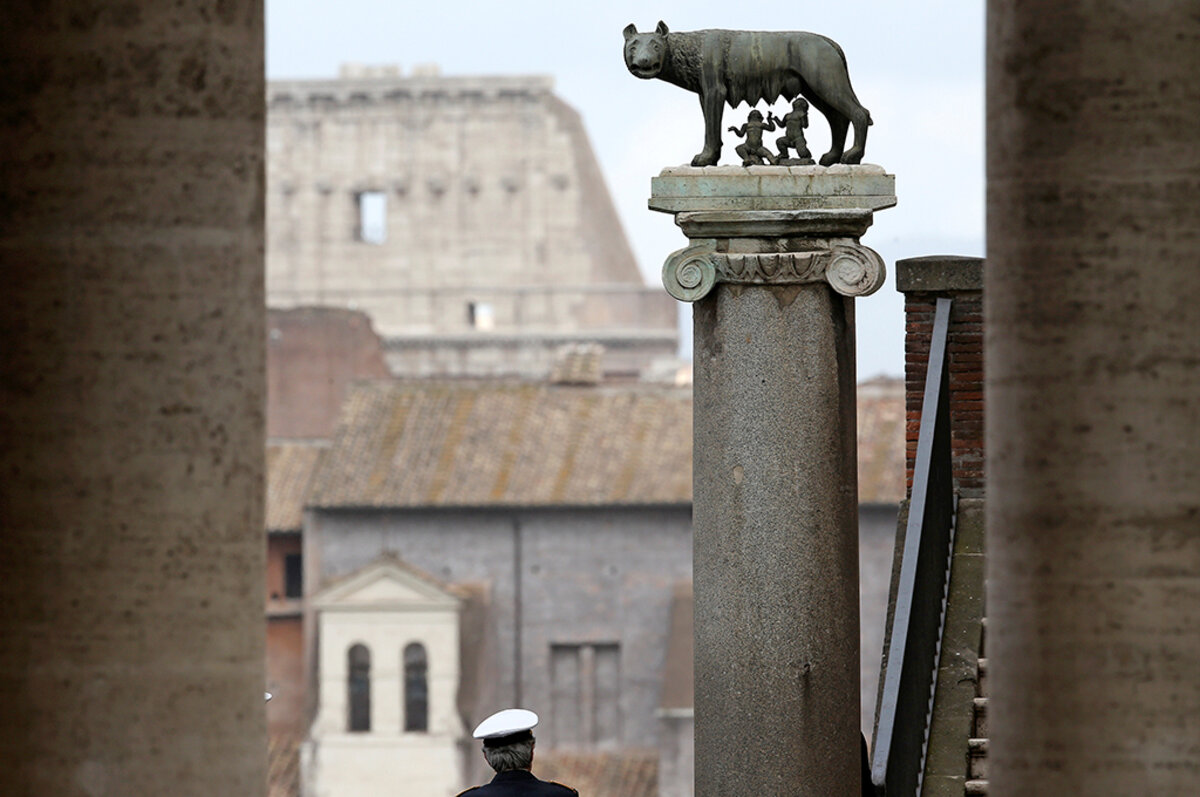It is one of the world’s best-known founding fables: According to legend, Rome was founded by Romulus, who as a baby was suckled along with his brother Remus by a she-wolf, after they were abandoned in the wilderness.
Now, nearly 3,000 years after Romulus killed his brother and became the first king of Rome, wild wolves are back. A small pack has been discovered living in the countryside just outside the city’s busy six-lane ring road and not far from Leonardo da Vinci International Airport.
It is the first time in more than a hundred years that wolves have established a presence near Rome, experts say. Their reappearance is emblematic of the species’ remarkable resurgence across Europe following centuries of persecution, a saga that parallels the tale of gray wolves across the Atlantic in the American West.
The pack consists of two adults and at least two mature cubs, according to the Italian League for the Protection of Birds, which runs a nature reserve where the animals have taken up residence.
They have been photographed by trap cameras drinking from muddy waterholes and loping along sandy woodland tracks.
The cubs were born this year, the conservation organization said, calling the presence of wolves just outside Rome “extraordinary news.”
The wolves mostly confine themselves to an inaccessible area of dense scrub and woodland, the League said.
“We are honored to have in this nature reserve such an emblematic species, which even today is subject to hunting and intolerance,” says Fulvio Mamone Capria, the president of the conservation group.
“Their presence is highly symbolic, both for Rome and the entire country.”
Not everyone is happy...
Hunting, trapping, and poisoning drove Italy’s wolves to the brink of extinction before they were granted protected status in 1971.
The population has since rebounded, and there are now estimated to be 1,500-2,000 individuals roaming the country, with strong populations in the Apennine Mountain range and in the Alps.
The wolves don’t always receive a warm welcome, as is often the case when apex predators return to regions where they are likely to come into contact with humans and their livestock. Every few months an Italian landowner, angry at having lost livestock to lupine jaws, will shoot a wolf and dump its corpse by the roadside – sometimes mutilated or decapitated – in protest against government policy.
Earlier this year Italian regional governments debated introducing a limited cull of wolves. It would have been the first such licensed killing for 46 years but it was fiercely opposed by conservation groups; 200,000 people signed a petition against the cull and the plan was dropped.
It is not just in Italy that wolves are on the increase. Some packs have crossed the Alps and entered France, where shepherds complain that they kill sheep.
Having crossed the border from Italy in 1992, they have since spread through the Jura and Vosges mountains on France’s eastern border into the Massif Central. Biologists now believe that at least one wolf is living in the forest of Rambouillet outside Paris.
Wolves returned to Switzerland in 1995 and to Denmark in 2012 – the first time they had been detected in the country since the time of Napoleon.
In Spain, the once-rare Iberian wolf, a subspecies, has recovered from near extinction in the mid-20th century and now numbers around 2,500.
Europe's countryside: fewer people, more wolves
The recovery of Canis lupus is due not only to bans on hunting and strict protection measures but also to the gradual “rewilding” of large parts of Europe.
As farmers across the continent have abandoned economically unproductive small farms and sought easier lives in towns, large tracts of countryside have reverted to woodland, creating new habitat for big animals.
Italy, for instance, now has twice as much forest and woodland as it did at the end of World War II; 35 percent of the country is covered in trees.
While farmers may see wolves as a threat to their livestock, conservationists argue that their return can help restore balance to the environment, keeping in check the numbers of deer and wild boar.
Rewilding Europe, a conservation movement founded in 2011 that works throughout the continent, aims to restore a million hectares of land to a natural state by 2022.
The organization would like to see wild horses – of the type seen in prehistoric cave drawings in France and Spain – as well as European bison and ibex reintroduced to areas they once inhabited.
Rewilding Europe maintains that the presence of big mammals would encourage eco-tourism and help people in parts of Europe that suffer from high unemployment.
Back in Rome, experts say the small wolf pack poses virtually no threat to humans.
Nor are the wolves a menace to livestock on surrounding farms – analysis of their excrement has shown that their diet is made up exclusively of wild boar, which roam the countryside around the capital in ever-increasing numbers.
It is thought that the wolves arrived near the capital after moving south from an area around Lake Bracciano, 30 miles away, where a small but resilient wolf population has existed for decades.
“From the scientific literature, we know that it’s the first time in more than 100 years that wolves have been found living near Rome,” says Alessia De Lorenzis, a professor of natural sciences who is monitoring the wolf pack in the Castel di Guido protected reserve. “We’re very happy that they’re back.”







